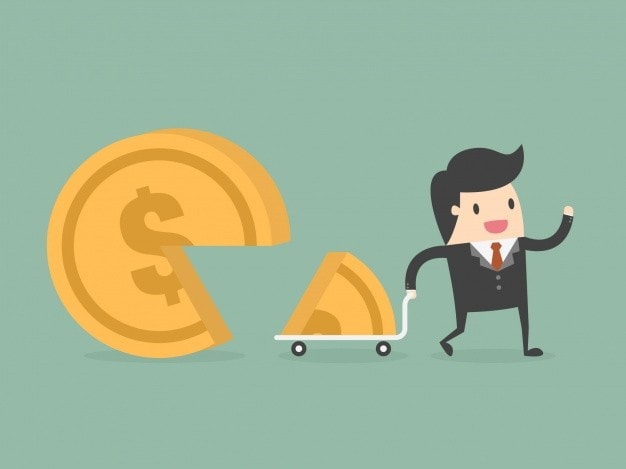Retailers continuously look for ideas to make their store look presentable to attract more customers. The presentation of products in the store is as important as the availability of a product in the store. Placement of products in a store is essential, and retailers would want to utilize every little space available to him in the store to maximize his profits. Therefore, retailers use different methods and techniques such as a plan for footpath and product placement to achieve their purpose. Planogramming is a strategy that comes into play when product placement is concerned.
In this article, you will learn about a product placement strategy known as planogram used by retailers for the placement of products in their stores.
Read this article, to learn what is planogram strategy, different types of planogramming, and the benefits of planogramming.
Table of Contents
Definition of planogram
A planogram can be defined as a diagram or flow chart that specifies where and how different products should be placed on the shelves of a store to maximize the customers’ purchases.
What is planogramming in merchandising?
Retail stores sell several products in one store. The proper assortment of these products is one of the essential tasks for a retailer. Moreover, the efficient use of physical space available in stores is necessary for retailers. Because when customers enter the store, they hope to find what they need quickly. After browsing through the store and finding the product that they need, they make the final purchase. Therefore, the purchasing decision of customers also depends on the easy availability of products on the shelves of the store. There are chances that a customer might leave the store without buying anything if he cannot find the thing that he wants to purchase quickly.
Planogramming is a product placement strategy used by retailers for the placement of products related to one another. The planogram diagram provides a visual representation of all products in a retail store. This diagram includes detailed information such as particular merchandise located on which aisle and which shelf of the aisle.
A planogram strategy also plays an essential role in deciding the number of facing allotted to each product. Facing products means the placement of products on the shelves of a store. Facing is a technique used to create a perfectly stocked shelf in a store.
The planogramming can be performed either using a planogram software or with the help of a planogrammer. A planogrammer is an expert in creating planogram design for a store. The complexity of a planogram diagram or flow chart might vary depending on the size and space of a retail store.
A planogram is prepared before merchandises arrive in the store. If a retailer has a clear idea of where he wants to place different merchandise, he can give clear instructions to his staff for the placement of merchandise without the wastage of time and hassle. Moreover, proper placement of merchandise can be used to impress customers.
Types of planogram
Planogramming can also be referred to as visual product placement. The visual product placement is a technique to place products in a store in such a way so that it grabs the maximum attention of customers.
In this section, you will learn about the different types of planogramming or visual product placement techniques.
1. Product placement based on its market share
This is the most straightforward strategy of planogramming. In this planogramming strategy, different products are allocated space on the shelves of a store based on their ability to generate revenue.
For example, a product that helps in generation of maximum revenue will be given the prime location in the retail store. This strategy is used so that the customer can quickly locate these products and buy without any hassle.
2. Product placement based on margin
A retailer sells products manufactured by different manufacturers in his store. The retailer agrees to sell these products based on the margin given to him by the manufacturers.
In this type of planogramming strategy, the retailer provides the prime location of his store to the products, which help him generate maximum profit. Small retailers mostly adopt this strategy because they are more concerned about their benefit than the sale of the products.
3. Product placement based on its commercial status
In this type of planogramming strategy, the products of higher brands are allocated the prime location on the shelves of the stores as compared to the products of lower brand value.
This is because most people nowadays buy products influenced by their image and brand name in the market. A product with maximum revenue generation gets the priority among the similar products of the top two brands. This type of planogramming technique is adopted by big retail stores such as Target, etc.
4. Block placement planogramming technique
Block placement is the most straightforward and easy way of placing products in the store. In this planogramming technique, all products of one family are placed together irrespective of their brand value or margin percentage.
Most discount stores adopted this planogramming technique to place products in their store. Customers prefer block placement planogramming techniques as they can easily compare the price and qualities of similar products of different brands and can make purchasing decisions easier.
5. Horizontal product placement planogramming technique
In the horizontal product placement planogramming technique, products are placed horizontally on the side by side shelves at the same eye level. In this way, customers can easily learn about similar products from different brands.
6. Vertical product placement planogramming technique
In this technique, related products of different brands are placed at different shelf levels.
Benefits of using planogram in store
The followings are the benefits of using planogramming techniques.
1. More revenue generation
Using the planogramming technique, retailers display products with the highest sales and high margin at the prime location of the store, which helps in more revenue generation.
2. Lower out-of-stock situations
Planogramming techniques create a system and order in the retail store. The retailer will learn immediately when a product is running out of stock by looking at the emptying shelves and can place an order on time to avoid out-of-stock situations.
3. Inventory management
Using planogramming techniques, the retailer has control over the stock left in inventory. In this way, the retailer has to spend less on inventory management. Moreover, a balance can be created between the demand of customers and shelf inventory.
4. Proper use of retail space
Retail space is significant for a retailer as he pays for this space. Therefore, using planogramming techniques store space can be used effectively to generate maximum profit.
5. The strategic advantage of suppliers and manufacturers
A supplier or manufacturer can provide a high margin on his products to retailers to get his product’s prime location in the store. The placement of products at prime location means more sales. In this way, the supplier can get maximum Return on Investment (ROI).
Liked this post? Check out the complete series on Retailing


